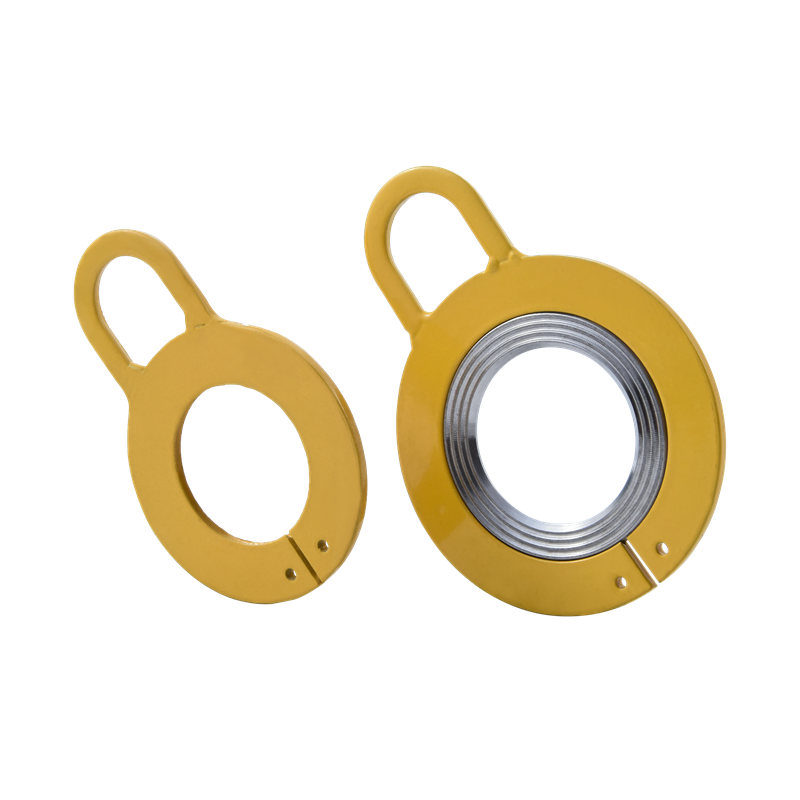RILSON GASKET
Ningbo Rilson Sealing Material Co., Ltd is dedicated to ensuring the secure and dependable operation of fluid sealing systems, offering clients the appropriate sealing technology solutions.
Kammprofile gaskets are a composite metal and non-metal sealing element with concentric or spiral serrated grooves machined onto their surface. They achieve sealing through localized high-pressure deformation of the tooth tips. They combine the strength of metal gaskets with the elasticity of non-metallic gaskets and are widely used in high-temperature and high-pressure applications.

Excellent anti-loosening performance
Serrated engagement design: The serrations on the gasket surface engage the surface of the connected component (such as a bolt head or nut) when tightened, creating a mechanical interlock and effectively resisting loosening caused by vibration, shock, or dynamic loads.
Superior to ordinary flat gaskets: While traditional flat gaskets rely solely on friction, the serrations of serrated gaskets provide additional anti-slip resistance.
High holding force
The sharp edges of the serrations produce localized plastic deformation under pressure, increasing the engagement depth of the contact surface and maintaining the preload even after long-term use.
No additional anti-loosening measures required
It can replace auxiliary anti-loosening elements such as spring washers and thread sealants, simplifying the assembly process and reducing costs and component count.
Flexible materials and surface treatments
Various materials: Commonly used carbon steel, stainless steel (such as 304 and 316), copper alloys, etc., adapt to different environments (such as corrosion-resistant and high-temperature applications).
Optional surface treatments: galvanizing, blackening, phosphating, etc., to further enhance rust or wear resistance.
High Adaptability
Applicable to uneven or slightly deformed contact surfaces, the serrations compensate for minor surface irregularities and ensure effective contact.
Can be used for connectors made of a variety of materials, including metal and plastic.
Easy Installation
Directly installs between the bolt/nut and the workpiece, requiring no special tools or complicated operations.
Reusability
Some designs allow for multiple disassembly and removal while maintaining anti-loosening effectiveness (however, repeated use may degrade performance; this is recommended based on the application conditions).
Cost-Effectiveness
Simple structure and low production cost, yet with significant anti-loosening effectiveness, the cost-effectiveness surpasses many complex anti-loosening solutions.
Typical Applications
Vibration Environments: Engines and transmission systems in automobiles, aviation, and rail transportation.
Heavy-Duty Equipment: Construction machinery and wind turbines.
Electronic and Electrical Equipment: Preventing loosening of circuit connections due to vibration.
High-Temperature/Corrosive Environments: Chemical pipelines and petroleum equipment (corrosion-resistant materials are required).
Precautions
Risk of Surface Damage: The serrations may scratch soft surfaces; the workpiece material should be evaluated. Preload control: Overtightening may cause the saw teeth to over-enter, impairing performance or damaging components.
Not suitable for extremely thin sheet materials: Saw teeth may penetrate excessively thin parts and cause failure.
Pre-Installation Preparation
Gasket Inspection
Confirm that the tooth profile is intact and free of defects, with tooth height tolerance within ±0.02mm.
Measure thickness uniformity; the thickness difference at four points should be ≤0.05mm.
Verify the material report, which must comply with ASTM F104 or GB/T 9129.
Flange Preparation
The flange sealing surface roughness must be Ra ≤3.2μm, with radially distributed texture.
Clean the sealing surface thoroughly with acetone; chlorinated solvents are prohibited.
Check flange parallelism; deviation using a feeler gauge should be ≤0.1mm/m.
Installation Procedure
Centering and Positioning
The gasket inner diameter should be 0.5-1mm larger than the pipe inner diameter to prevent damage from media erosion.
When installing double-tooth gaskets, the tooth tips should face the high-pressure side (or, if unsure, the flange side).
Bolt Pre-Tightening
Tighten in four stages:
Initial pre-tightening to 30% of the target torque
Diagonal tightening to 50% torque
Circular tightening to 80% torque
Finally, reach 100% torque in two steps.
Use a calibrated torque wrench, maintaining an error within ±5%.
Cool carbon steel bolts with molybdenum disulfide lubricant.
Retighten while hot.
After the system has initially heated up to operating temperature, re-tighten after cooling to 80°C.
High-temperature alloy bolts require a 5%-8% increase in compensation torque.
Regular Maintenance Specifications
In-Service Inspection
Bolt Stress Monitoring: Use an ultrasonic bolt stress gauge every six months. Retighten if the initial preload is reduced by more than 15%.
Leak Check: Use a halogen leak detector (sensitivity ≤ 1×10⁻⁶ Pa·m³/s) to inspect the sealing surface weekly.
Shutdown Inspection
Tooth Tip Condition Assessment:
Slight flattening of the tooth tip is permitted (≤ 30% of the original height).
Tooth root cracks or protrusions are prohibited.
Seal Layer Inspection:
Graphite/PTFE layer thickness loss ≤ 20%.
No radial through-hole cracks (crack length < 2mm may be temporarily used).
Cleaning Requirements: Use anhydrous ethanol to remove carbon deposits in the tooth grooves (metal brushes are prohibited).
Flange sealing surfaces should be polished in one direction with 800-grit sandpaper (to remove oxide layers).
Mandatory Rejection Criteria
Structural Damage
Any of the following conditions occurs in the tooth profile area:
Three or more consecutive tooth fractures
Tooth height wear > 0.1mm (for an original tooth height of 0.3mm)
Creep deformation of the metal frame (straightness deviation > 0.2mm)
Seal failure
Tested according to ISO 5208:
Helium leak rate > 1×10⁻⁵ Pa·m³/s
Hydraulic pressure test: Maintain pressure for 30 minutes; pressure drop > 5%